Resources
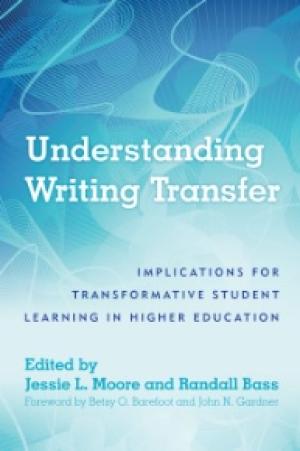
Understanding Writing Transfer: Implications for Transformative Student Learning in Higher Education
While education is based on the broad assumption that what one learns here can transfer over there– across critical transitions – what do we really know about the transfer of knowledge? The question is all the more urgent at a time when there are pressures to “unbundle” higher education to target learning particular subjects and skills for occupational credentialing to the detriment of integrative education that enables students to make connections and integrate their knowledge, skills and habits of mind into a adaptable and critical stance toward the world. This book – the fruit of two-year multi-institutional studies by forty-five researchers from twenty-eight institutions in five countries – identifies enabling practices for, and five essential principles about, writing transfer that should inform decision-making by all higher education stakeholders about how to generally promote the transfer of knowledge. This collection concisely summarizes what we know about writing transfer and explores the implications of writing transfer research for universities’ institutional decisions about writing across the curriculum requirements, general education programs, online and hybrid learning, outcomes assessment, writing-supported experiential learning, e-portfolios, first-year experiences, and other higher education initiatives. This volume makes writing transfer research accessible to administrators, faculty decision makers, and other stakeholders across the curriculum who have a vested interest in preparing students to succeed in their future writing tasks in academia, the workplace, and their civic lives, and offers a framework for addressing the tensions between competency-based education and the integration of knowledge so vital for our society. (From the Publisher)

Click Here for Book Review From the University of California, Berkeley, to Middlebury College, institutions of higher learning increasingly find themselves on the front lines of cultural and political battles over free speech. Repeatedly, students, faculty, administrators, and politically polarizing invited guests square off against one another, assuming contrary positions on the limits of thought and expression, respect for differences, the boundaries of toleration, and protection from harm. In Free Speech on Campus, political philosopher Sigal Ben-Porath examines the current state of the arguments, using real-world examples to explore the contexts in which conflicts erupt, as well as to assess the place of identity politics and concern with safety and dignity within them. She offers a useful framework for thinking about free-speech controversies both inside and outside the college classroom, shifting the focus away from disputes about legality and harm and toward democracy and inclusion. Ben-Porath provides readers with strategies to de-escalate tensions and negotiate highly charged debates surrounding trigger warnings, safe spaces, and speech that verges on hate. Everyone with a stake in campus controversies—professors, students, administrators, and informed members of the wider public—will find something valuable in Ben-Porath's illuminating discussion of these crucially important issues. (From the Publisher)

Click Here for Book Review Pauses constitute a simple technique for enlivening and enhancing the effectiveness of lectures, or indeed of any form of instruction, whether a presentation or in an experiential setting. This book presents the evidence and rationale for breaking up lectures into shorter segments by using pauses to focus attention, reinforce key points, and review learning. It also provides 65 adaptable pause ideas to use at the opening of class, mid-way through, or as closers. Starting with brain science research on attention span and cognitive load, Rice bases her book on two fundamental principles: shorter segments of instruction are better than longer ones, and learners who actively participate in instruction learn better than those who don’t. Pausing helps teachers apply these principles and create student engagement without requiring major changes in their lesson plans. With careful planning, they can integrate pauses into learning sessions with ease and significantly reinforce student learning. They will also gain feedback on students’ comprehension. Rice sets out the characteristics of good pauses, gives advice on how to plan them and how to introduce them to maximum effect. She provides compelling examples and concludes with a repertory of pauses readers can easily modify and apply to any discipline. This book contains a compendium of strategies that any teacher can fruitfully use to reinforce learning, as well as a stepping stone to those seeking to transition to more active learning methods. It: • Makes the case for using pauses • Identifies the primary functions of pauses: focusing, refocusing, enhancing retention, or closing off the learning experience • Provides research evidence from cognitive science and educational psychology • Provides practical guidance for creating quick active learning breaks • Distinguishes between starting, middle, and closing pauses • Includes descriptions, with suggested applications, of 65 pauses (From the Publisher)
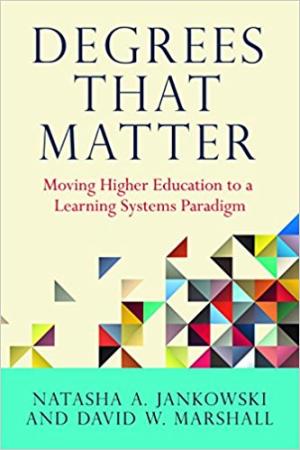
Concerned by ongoing debates about higher education that talk past one another, the authors of this book show how to move beyond these and other obstacles to improve the student learning experience and further successful college outcomes. Offering an alternative to the culture of compliance in assessment and accreditation, they propose a different approach which they call the Learning System Paradigm. Building on the shift in focus from teaching to learning, the new paradigm encourages faculty and staff to systematically seek out information on how well students are learning and how well various areas of the institution are supporting the student experience and to use that information to create more coherent and explicit learning experiences for students. The authors begin by surveying the crowded terrain of reform in higher education and proceed from there to explore the emergence of this alternative paradigm that brings all these efforts together in a coherent way. The Learning System Paradigm presented in chapter two includes four key elements—consensus, alignment, student-centeredness, and communication. Chapter three focuses upon developing an encompassing notion of alignment that enables faculty, staff, and administrators to reshape institutional practice in ways that promote synergistic, integrative learning. Chapters four and five turn to practice, exploring the application of the paradigm to the work of curriculum mapping and assignment design. Chapter six focuses upon barriers to the work and presents ways to start and options for moving around barriers, and the final chapter explores ongoing implications of the new paradigm, offering strategies for communicating the impact of alignment on student learning. The book draws upon two recent initiatives in the United States: the Tuning process, adapted from a European approach to breaking down siloes in the European Union educational space; and the Degree Qualifications Profile (DQP), a document that identifies and describes core areas of learning that are common to institutions in the US. Many of the examples are drawn from site visit reports, self-reported activities, workshops, and project experience collected by the National Institute for Learning Outcomes Assessment (NILOA) between 2010 and 2016. In that six-year window, NILOA witnessed the use of Tuning and/or the DQP in hundreds of institutions across the nation.(From the Publisher)
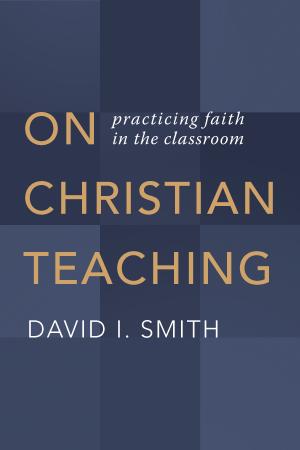
Click Here for Book Review The latest from an internationally recognized thinker at the intersection of faith and pedagogy Christian teachers have long been thinking about what content to teach, but little scholarship has been devoted to how faith forms the actual process of teaching. Is there a way to go beyond Christian perspectives on the subject matter and think about the teaching itself as Christian? In this book David Smith argues that faith has a critical role in shaping pedagogy and the learn-ing experience. Smith’s scholarly exploration of education combines both theory and practice. With clever and sometimes funny examples, he shows how teachers of every subject and age group can be atten-tive to how their students are experiencing and interpreting learning. From desk arrangement to discussion questions, there are myriad opportunities to design classes that are deeply rooted in Christian practices. On Christian Teaching provides fresh insight into Christian education that expresses faith and community. (From the Publisher)
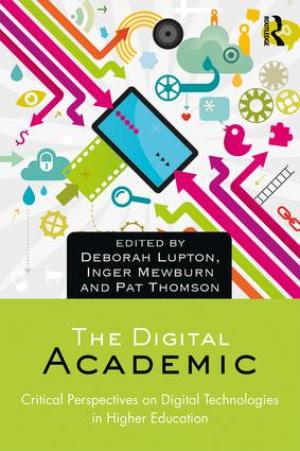
Academic work, like many other professional occupations, has increasingly become digitised. This book brings together leading scholars who examine the impacts, possibilities, politics and drawbacks of working in the contemporary university, using digital technologies. Contributors take a critical perspective in identifying the implications of digitisation for the future of higher education, academic publishing protocols and platforms and academic employment conditions, the ways in which academics engage in their everyday work and as public scholars and relationships with students and other academics. The book includes accounts of using digital media and technologies as part of academic practice across teaching, research administration and scholarship endeavours, as well as theoretical perspectives. The contributors span the spectrum of early to established career academics and are based in education, research administration, sociology, digital humanities, media and communication.(From the Publisher)

Decoding the Disciplines is a widely-used and proven methodology that prompts teachers to identify the bottlenecks – the places where students get stuck – that impede learners’ paths to expert thinking in a discipline. The process is based on recognizing the gap between novice learning and expert thinking, and uncovering tacit knowledge that may not be made manifest in teaching. Through “decoding”, implicit expert knowledge can be turned into explicit mental tasks, and made available to students. This book presents a seven-step process for uncovering bottlenecks and determining the most effective way to enable students to surmount them. The authors explain how to apply the seven steps of Decoding the Disciplines – how to identify bottlenecks, unpack the critical thinking of experts, teach students how to do this kind of thinking, and how to evaluate the degree to which students have learned to do it. They provide in-depth descriptions of each step and, at the end of each chapter, at least one exercise the reader can do on his or her own. Because the decoding process works well with groups, they also provide exercises for leading groups through the process, making available to informal groups as well as groups led by professional developers, the tools to transform their understanding of teaching and learning by getting the student view that they refer to as “the bottleneck perspective.This book uses research and personal stories from university lecturers to explore pedagogical strategies that illuminate how students’ minds can be ‘switched on’ in order to unlock their extraordinary potential. It presents diverse ways to create inspiring learning environments, in chapters written by internationally respected experts in the broad field of the social sciences. Because it focuses on the mental moves that underlie the cognitive competencies we want students to develop, spelling out what critical thinking consists of for any field, the methodology helps teachers to get beyond focus on content delivery and transmission and provides criteria to select from the bewildering array of teaching tools the methods most appropriate to what they are teaching. This is a book for faculty who want their students to develop disciplinary forms of reasoning, and are moreover interested in a methodology with the potential to transform and reinvigorate their teaching. It is particularly suitable for use in communities of practice, and should be indispensable for any one engaged in cross-disciplinary teaching, as it enables co-teachers to surface each other’s tacit knowledge and disciplinary assumptions. (From the Publisher)
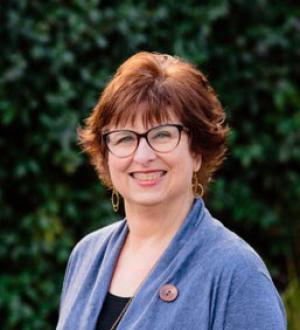
Walking the beach, I am caught by the ordered chaos of blue and white shards oriented around a large center shell. What a great image of centered-set thinking, I muse, and pull out my phone to capture the image. Isn’t a part of the deans’ job to keep pointing to the center? To guard not the boundaries but the heart? In the midst of shifting cultural forces, the changing nature of the institutional church and theological education (all our usual suspects), we are committed to a common mission, living a common life, journeying toward a common goal. But a poet reminds me that “things fall apart; the centre cannot hold.” And the words trouble me because I long for the center to hold. What I don’t see, until I bring the captured image up on my screen, is the bright luminous reflection offering me a glimpse of another reality to which the whole enterprise is oriented. And I think, yes, it is true. The deans’ job is to keep orienting toward the center and fortunately, we do not do it alone.
Ground TransportationAbout a week prior to your travel you will receive an email from Beth Reffett (reffettb@wabash.edu) with airport shuttle information. This email includes the cell phone number of your driver, where to meet, and fellow participants with arrival times. Please print off these instructions and carry them with you.Contact Information on Day of TravelWabash Center: 800-655-7117After Hours: as directed in the travel email Venue (Trippet Hall): 765-361-6490The Travel Authority (to change flights) 800-837-6568 Tami Brubaker tami.brubaker@altour.comThommi Weliever thommi.weliever@altour.com
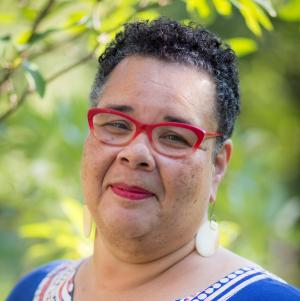
My course began with an iconic book by bell hooks and ended, after several other readings, with a beloved text by Parker Palmer. On the last day of class, a white woman student came up to me to tell me how much she enjoyed the course (she had earned an A in the course), and to give me feedback, saying, “Next time, start with the white guy and not bell hooks; it will be easier for us white people to stay in the conversation.” So much teaching is complicit with dominant race ideologies and patriarchy, yet we yearn for different ways to teach. White normative approaches to disciplinary-subject matter, reading lists which strain to add even one non-white author, grading standards which insist upon majority culture assessment categories are only a few of the ways that the ideals which normalize whiteness permeate our daily living and teaching. Disrupting these patterns of evil and shifting these detrimental values takes mixing things up, muddling stuff, creating newness and difference. Increasing our knowledge of new resources and redefining our criteria of what might constitute acceptable academic resource for our classrooms, might be a way forward. Look for narratives which resist and repudiate the story of whiteness. Stories that champion and reinforce whiteness and patriarchy, stories that allow for a token few minoritized people to triumph, but refuse to portray a change in the oppression for all or stories which never question the absence of powerless people in significant roles permeate our airwaves and imaginations. We are persons immersed in the narrative which supports and promotes white supremacy, white nationalism, and patriarchy. We have to find ways to resist. A critical challenge for all teachers who want to teach as a disruption to whiteness and patriarchy is that, regardless of personal social location, each of us must expand our knowledge of freedom narratives. We, all of us, given the ethos of the United States in the 21st century, must with great intent, seek out and immerse ourselves in the counter-narratives to the lie of whiteness. We must internalize a narrative of freedom, love, creativity, and forgiveness. We must believe in the sacredness and worth of all human beings and teach this story in unflinching and believable ways. As a spiritual discipline, take time to fill your consciousness and imagination with freedom narratives as a way to fortify yourself for teaching against the status quo. We must re-teach ourselves in order to teach toward freedom. Read stories that depict and portray people of color as intelligent, generative, and caring human beings – as normal. This is why the movie Black Panther was so popular and so refreshing. It did not start and end with chattel slavery. It made use of fresh portrayals of people of the African diaspora which told a story of community, kinship and the complexity of freedom. Avoid the motifs of the individual superhero like the ways Martin Luther King’s or Harriet Tubman’s legacies have been distorted. Look past the stories of inferiority and degradation often told in the daily news cycle. Find stories where the women are not one-dimensional wooden beings and the people of color are not gratuitously violent, oversexualized, or stupid. Teach yourself to identify the narratives of freedom and bring them into your classroom. In immersing yourself in freedom narratives, look for a multiplicity of mediums: film clips, music, screenplays, artwork, photography (all means of storytelling), and then consider making use of the best ones in your classes. Narratives that are sophisticated about race/gender politics are seeping into the U.S. culture. Look for new stories like “Dear White People” on Netflix. Binge watching both seasons of “Dear White People” took focus and stamina. I managed to do it in 48 hours – taking occasional breaks to walk my dog, get a snack and sleep. The well-written Netflix series is based upon an acclaimed film of the same name. The plot is set in a 21st-century fictitious college called Winchester University. The story depicts the lives of African American college students at this Ivy League, predominantly white university. The Black students are bright, articulate, culturally and politically conscious, and conscientious. In other words, the black folks are woke. The title “Dear White People” is a clue that the white folks of the community are not woke. The lead character and protagonist has a campus radio show. She often, to inform white peers, professors, and university administrators formats her radio soliloquies in the form of a letter which begins, “Dear White People.” Then in great poetic rant, she informs and reprimands the offending, or simply ignorant, white people about their white supremacy, privilege, and the ways their behaviors and the racist, sexist systems which privilege them, to which they seem to be oblivious, continually affect her and her friends. The poignant stories disclose and interrogate cultural bias, social injustice, misguided activism, and the zeal that comes with college-aged persons. The stories are also about the relationships of young people and the ways they struggle to negotiate their social, cultural, and intellectual growth. Creator and executive producer Justin Simien is a storyteller who understands the ever-present irony, bitter humor and too often anger for persons attempting to live life while being a target of white supremacy and patriarchy. “Dear White People” is an expanding of freedom narratives. This is the kind of material you want to explore for possible classroom use. Material which unapologetically tells the story from the perspective of the oppressed and the ways we navigate the dehumanizing terrain. Consider radical ideas as you find new resources. What if you taught your introductory course with no white or male authors? Develop a course which is soundly disciplinary, but has no majority culture readings. This might mean using all articles and no textbooks, per se, but why not? Teaching to transform might not mean including a few voices of the marginalized --- it might mean excluding the voices of the oppressor so we can learn the perspectives, voices, and stories of the oppressed. And/or consider introducing each text to be read by providing, or having your students research, the social locations of each author. If an author is white and male, identify the person in this way. Resist only identifying the gender and race of authors who are female and people of color because it signals they are “exceptions” to the routinely read normal readings authored by white men. Creating educational spaces for which the voices of the oppressed and marginalized is taken seriously, respected, even prioritized is a paradigm-shifting act – an act of freedom in which you can participate by the stories you bring into your classroom.
Wabash Center Staff Contact
Sarah Farmer, Ph.D
Associate Director
Wabash Center
farmers@wabash.edu